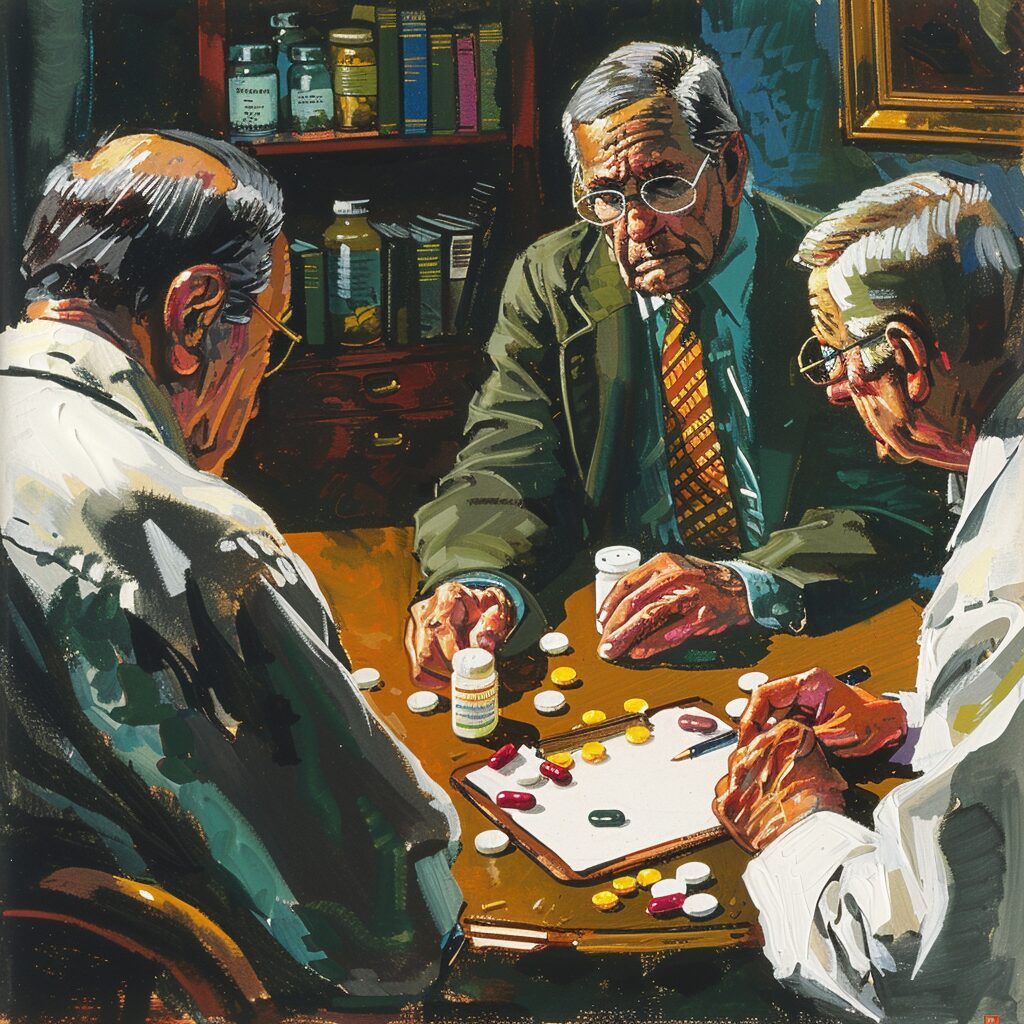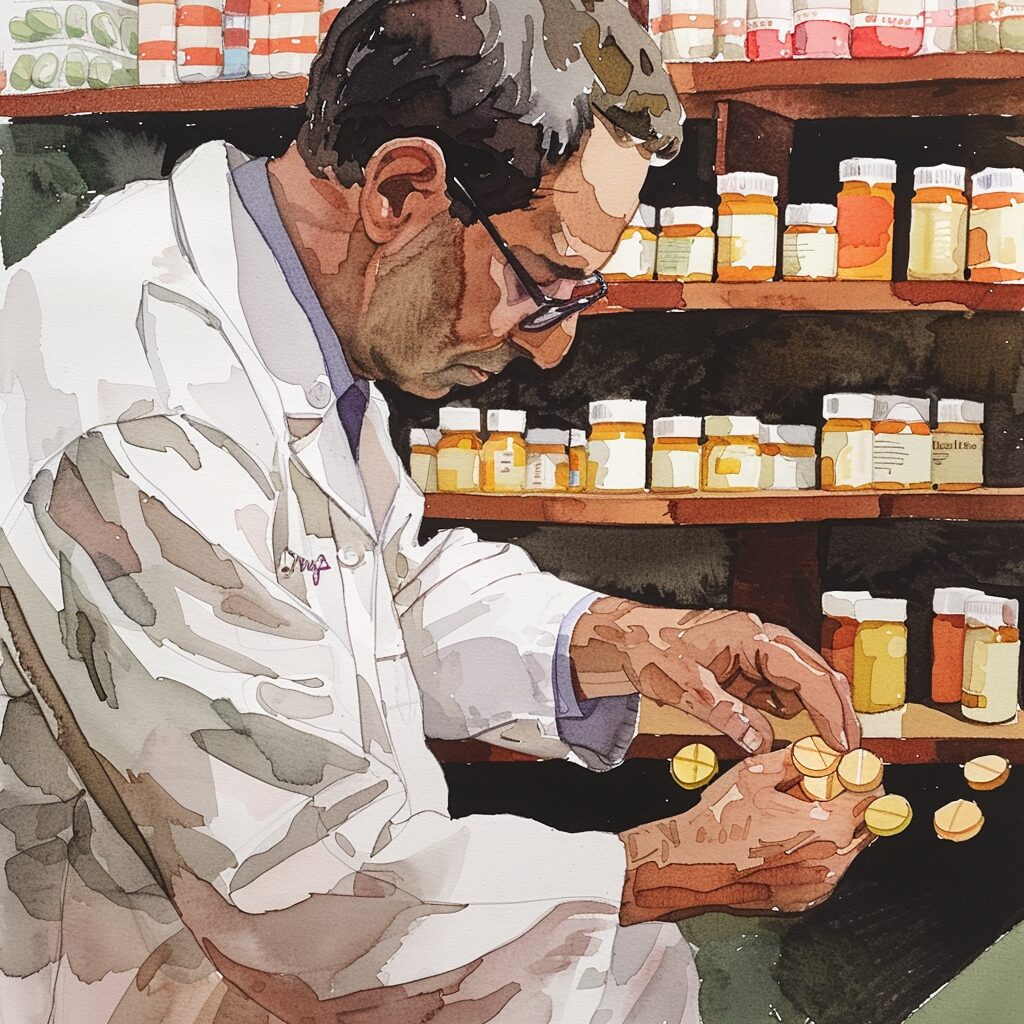Alcoholism, or alcohol use disorder, represents a serious challenge where individuals struggle to regulate their drinking, leading to damaging personal and health effects. In this article, we explore “what is alcoholism,” guiding you through its symptoms, treatment, and ways to prevent its onset, equipping you with knowledge to confront this widespread disorder.
Key Takeaways
- Alcohol use disorder (AUD) is a medical condition with a range of severities, characterized by an impaired ability to manage alcohol consumption, leading to adverse social, occupational, and health consequences.
- Alcohol addiction alters brain chemistry and structure, complicating recovery due to the creation of a chemically-driven cycle of dependence, tolerance, and withdrawal that exacerbates the pursuit of alcohol.
- Treatment for AUD encompasses medical interventions, behavioral therapies, and support groups, and is most effective when tailored to the individual’s specific needs, including co-occurring mental health conditions.
Demystifying Alcoholism: Understanding the Condition

Alcoholism, now clinically known as alcohol use disorder (AUD), is more than a mere lack of self-control or a social faux pas. It’s a medical condition characterized by an impaired ability to stop or control alcohol use despite the disastrous consequences that ripple through one’s social, occupational, and health spheres. This chronic disorder is not a one-size-fits-all label but rather exists on a spectrum, with the severity ranging from mild to severe, each with its own set of challenges and necessary interventions.
The widespread consequences of AUD can manifest in professional setbacks, strained personal relationships, and a myriad of health complications that worsen over time. Understanding the full scope of alcoholism is the first step in addressing and eventually overcoming this condition that affects millions worldwide. It’s a complex puzzle that requires a careful and compassionate approach to piece together the elements of cause, effect, and resolution.
The Spectrum of AUD
Within the medical community, AUD is diagnosed using a standardized set of criteria from the Diagnostic and Statistical Manual of Mental Disorders, Fifth Edition (DSM-5). These criteria offer a framework to gauge the severity of alcoholism, categorizing it into mild, moderate, or severe based on the number of symptoms present. It’s a personalized approach, acknowledging that each person’s struggle with alcohol is unique and requires a tailored response.
The progression from moderate to severe AUD often involves a vicious cycle, where altered brain functions perpetuate an insatiable quest for alcohol, disregarding the negative consequences. This cycle is not merely a matter of choice but a neurological trap that ensnares the individual, making the journey toward sobriety a challenging battle against one’s own neural pathways.
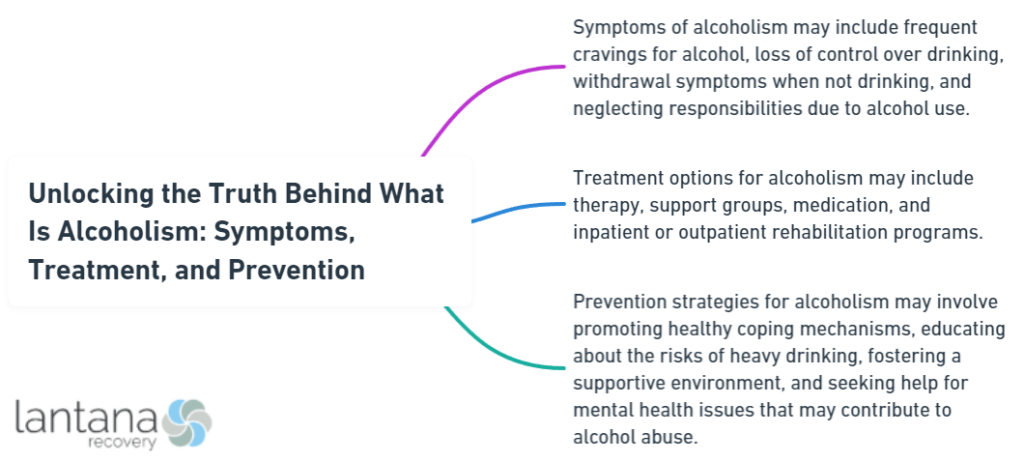
Recognizing the Signs
Acknowledging the red flags of alcoholism is a crucial step toward early intervention. The signs are not always blatant; they can be as subtle as the psychological dependence manifested through strong urges to drink, failed attempts to cut down on consumption, or denial of the problems alcohol causes. Physical indicators also paint a grim picture, from the development of tolerance to withdrawal symptoms such as nausea and shaking, which further entangle individuals in the web of alcohol dependence.
Recognizing these symptoms is not just a clinical exercise; it’s an act of compassion that can steer someone towards the help they need. It’s about connecting the dots between behavior and physical signs, understanding that these indicators are a cry for help, and responding with the appropriate support and treatment.
The Stages of Alcohol Use
The descent into alcoholism can be mapped out through four distinct stages:
- Pre-alcoholic phase: Alcohol is a tool for relaxation or stress relief without compulsive drinking behaviors.
- Early alcoholic stage: Signs of trouble emerge, including binge drinking, blackouts, and a creeping loss of control over alcohol intake.
- Chronic phase: Alcohol takes precedence over all responsibilities, while health and memory issues become increasingly evident.
- End-stage: The individual is completely dependent on alcohol and experiences severe physical and mental health problems.
By the end-stage of alcoholism, individuals face severe consequences, including life-threatening illnesses and the collapse of personal and financial stability. The transition from casual drinking to dependence and addiction is marked by a growing tolerance, requiring more alcohol to achieve the same effects, ultimately leading to a situation that is difficult to escape from, often caused by consuming too much alcohol.
Alcohol Rehab South Carolina
Alcohol rehab in South Carolina offers individuals struggling with alcohol addiction a chance to reclaim their lives. With a variety of treatment options available, including inpatient and outpatient programs, individuals can find the support they need to overcome their addiction. These programs often incorporate therapy, counseling, support groups, and medical supervision to help individuals detox safely and address the underlying causes of their alcohol use disorder. Additionally, many alcohol rehab centers in South Carolina provide aftercare services to support individuals as they transition back into their daily lives. Seeking help from a reputable alcohol rehab facility in South Carolina can be the first step toward a sober and healthier future.
The Science of Addiction: How Alcohol Affects the Brain
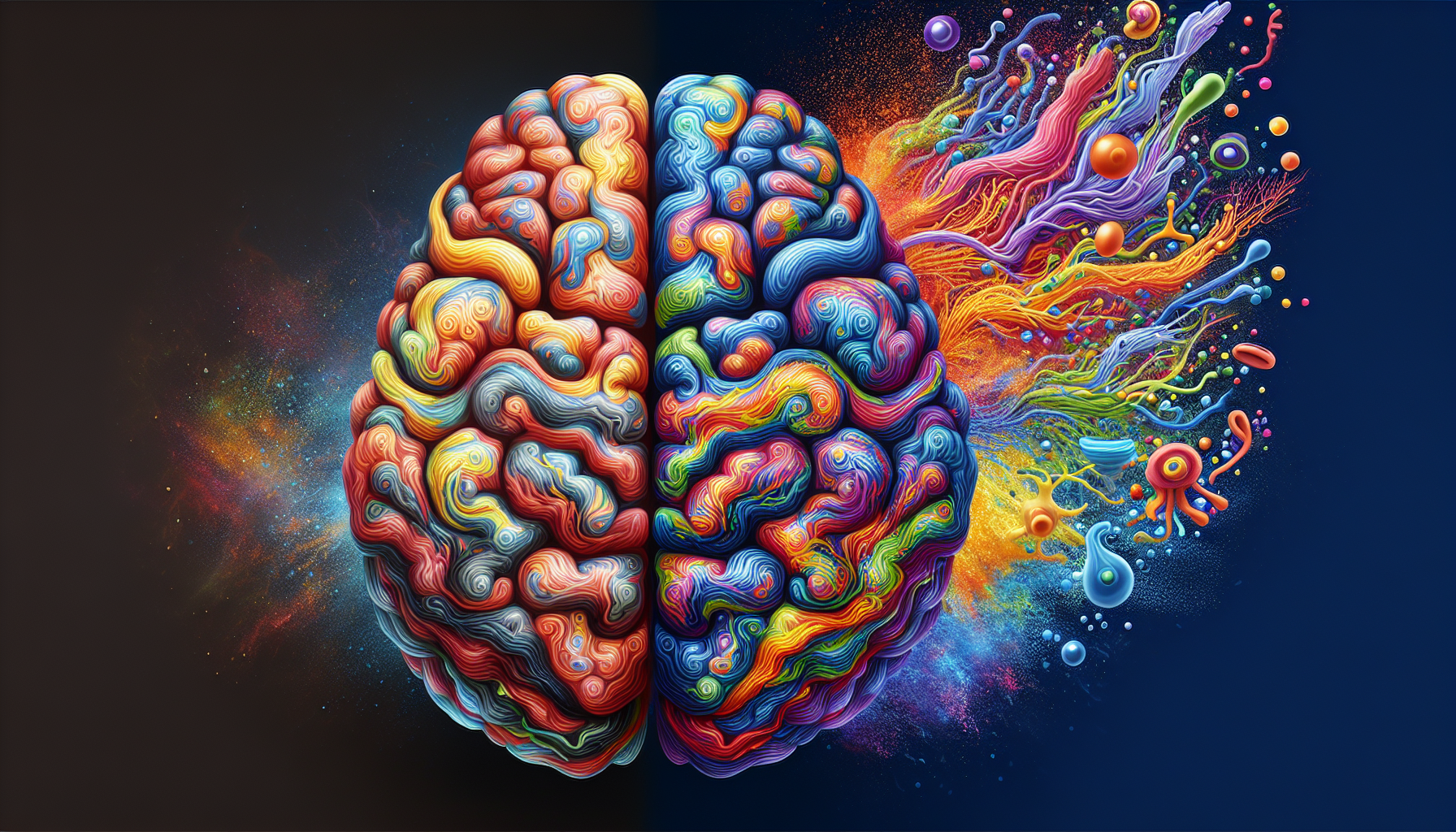
Delving into the brain’s response to alcohol unveils a complex battlefield where neurotransmitters are disrupted, tipping the balance between inhibition and excitation. Alcohol’s influence extends to increasing the function of inhibitory neurotransmitters like GABA, glycine, and adenosine while depressing excitatory ones such as aspartate and glutamate. Short-term exposure to alcohol heightens inhibition, but chronic use forces the brain to adapt, laying the groundwork for tolerance, withdrawal, and the relentless pursuit of alcohol.
This neurological tug-of-war doesn’t just alter the brain’s chemistry; it changes its very structure. Heavy drinking can reduce neuron size and contribute to functional alterations, which play a key role in the addictive cycle. The initially pleasurable effects of alcohol quickly become overshadowed by the need to drink in order to avoid withdrawal discomfort, indicating a shift in motivation from pleasure to the avoidance of pain.
Neurological Impact
Chronic alcohol consumption, which occurs when people regularly drink alcohol, wreaks havoc on the brain’s landscape, leading to:
- Attention deficits
- Memory alterations
- Mood swings
- Drowsiness
Memory impairment, particularly in the hippocampus, underlines alcohol’s destructive power over one of our most precious faculties: the ability to remember. This cognitive disruption doesn’t spare social skills either, as the neurotoxic effects on the prefrontal cortex significantly impair one’s ability to navigate social interactions.
The damage is not limited to cognitive functions; white and gray matter also suffer, contributing to the risk of dementia and altering adolescent brain development. Alcohol-induced persisting amnestic disorder is a testament to the long-term impact of alcohol misuse, marking a profound change in brain volume and cognitive abilities that affect the very essence of who we are to.
The Cycle of Dependence
Each episode of alcohol withdrawal sets the stage for the next, becoming progressively more severe—a phenomenon known as the kindling effect. This not only cements functional changes in the brain’s neural circuits but also alters gene expression, making sobriety an even more elusive goal. The withdrawal phase is characterized by heightened negative emotions and increased nerve cell toxicity, adding a layer of suffering to the already challenging process of abstinence.
The late stages of alcohol addiction are particularly harrowing, as any attempt to stop drinking is met with severe withdrawal symptoms that underscore the central role alcohol assumes in the individual’s life. The addiction cycle is driven by persistent changes in neural circuits within key brain regions, including the basal ganglia and prefrontal cortex, which are pivotal in governing behavior and decision-making.
Risk Factors for Developing Alcoholism
Unraveling the risk factors for alcoholism is akin to navigating a minefield of genetic, environmental, and psychological elements. Family history of AUD can significantly increase the likelihood of developing the disorder, with genetics accounting for approximately half of an individual’s risk to. This genetic vulnerability, intertwined with early drinking experiences, sets the stage for potential alcohol-related problems later in life.
Beyond genetics, the environment plays an equally potent role. Social interactions, life experiences, and the normalization of drinking within certain cultures all contribute to the risk of alcohol misuse. Adolescents are particularly vulnerable, as alcohol consumption during these formative years can disrupt brain development, potentially causing long-term changes that predispose them to alcoholism.
What is Drug Rehabilitation
“What is drug rehabilitation?” is a common question that arises when discussing addiction treatment. Drug rehabilitation, often referred to as drug rehab, is a process aimed at helping individuals overcome substance abuse and addiction. It involves various therapeutic interventions, counseling sessions, medical treatments, and support networks tailored to the needs of each individual. The primary goal is to address the physical, psychological, and social aspects of addiction to facilitate long-term recovery. Drug rehabilitation programs may vary in duration, intensity, and approach, but they typically strive to empower individuals to regain control over their lives and achieve sobriety. Overall, drug rehabilitation plays a crucial role in helping individuals break free from the cycle of addiction and rebuild healthier, fulfilling lives.
Genetic Predispositions
The genetic landscape of alcoholism is diverse and complex. There isn’t a singular “alcohol gene,” but rather a constellation of genes and their variations that influence the risk of developing an AUD. Genes such as ADH1B and ALDH2 are closely associated with problem drinking and are involved in how the body metabolizes alcohol, affecting an individual’s susceptibility to the addictive properties of alcohol.
Understanding the genetic component of alcoholism is crucial in identifying those at higher risk and potentially guiding more personalized interventions. Yet, genetics only paint part of the picture, as we will see when we explore the environmental triggers that interact with these inherited factors.
Environmental Triggers
The environment in which we live is saturated with cues and norms that can encourage or inhibit alcohol use. Learned behaviors from family drinking patterns and societal acceptance can strongly influence an individual’s drinking habits, sometimes leading to alcohol abuse. Media portrayals and societal attitudes often depict drinking as a benign pastime, further entrenching the normalization of alcohol consumption.
Early onset of drinking is a particularly significant risk factor, with younger individuals facing a higher likelihood of developing alcohol regulation problems in the future. Stressful life events, such as bereavement, can also push individuals towards drinking excessively as a coping mechanism, laying the groundwork for alcohol misuse.
Emotional and Psychological Contributors
The emotional and psychological dimensions of alcoholism are often the most insidious. Trauma, especially during childhood, increases the likelihood of experimenting with alcohol and can lead to AUD in adulthood. Conditions like PTSD frequently co-occur with AUD, further complicating the path to recovery. Treatment approaches that address both addiction and underlying psychological issues simultaneously, known as dual diagnosis, are vital for successful outcomes.
Parental influence is significant in shaping future drinking behaviors, with children often mirroring their parents’ use of alcohol to cope with stress. Social anxiety is another emotional trigger that can lead to alcohol misuse, as individuals may rely on alcohol to alleviate discomfort in social settings, only to find themselves caught in a cycle of increasing tolerance and dependence.
The Health Consequences of Long-Term Alcohol Misuse
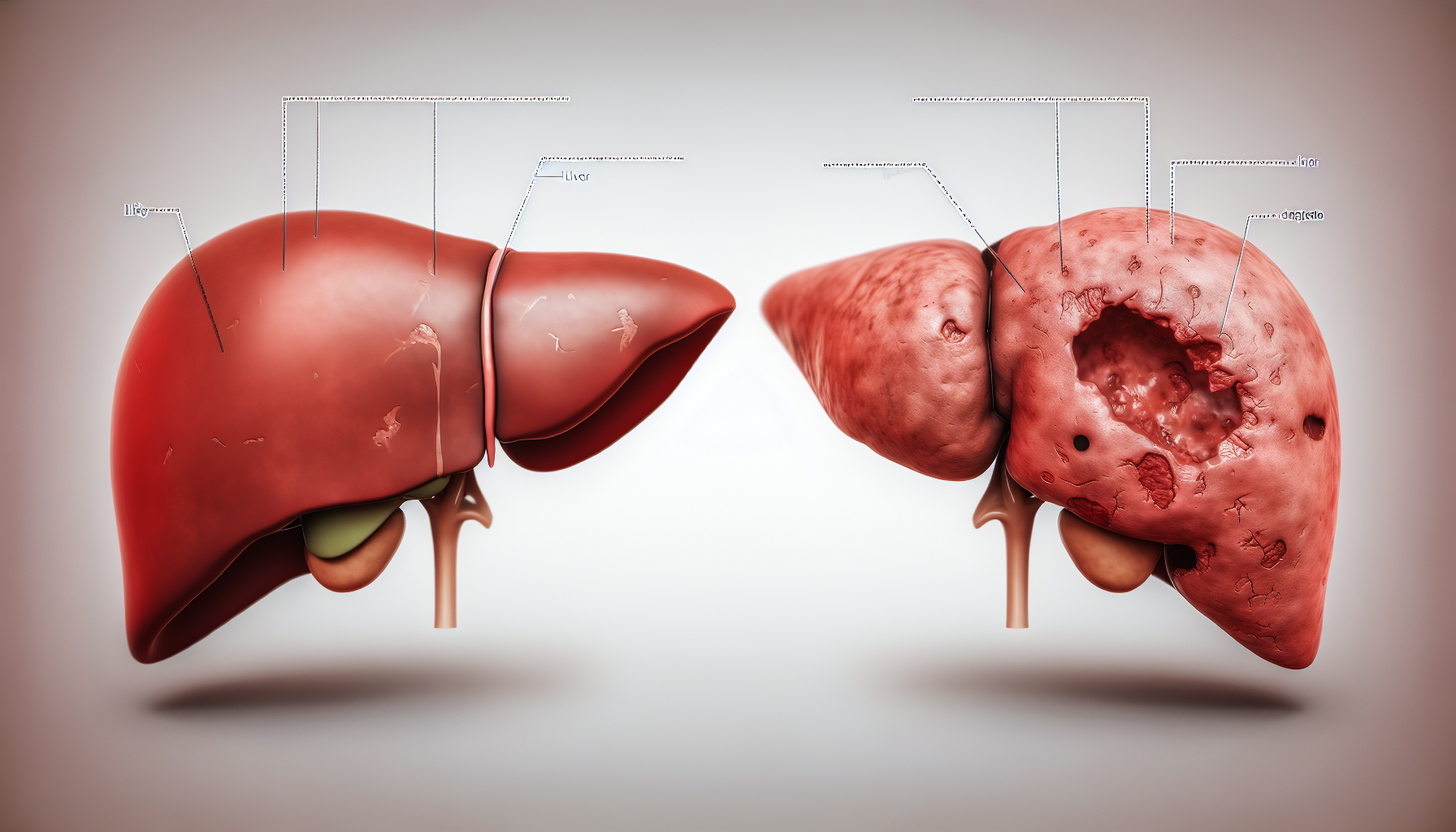
The health consequences of prolonged alcohol abuse are far-reaching and grave. Chronic alcohol misuse is linked to a reduction in life expectancy by approximately a decade and accounts for over 140,000 deaths annually in the U.S. alone. The liver, the heart, the immune system, and even the bones are not spared, with diseases such as alcoholic hepatitis, cardiomyopathy, and osteoporosis becoming grim realities to.
These health issues underscore the urgency of addressing alcohol problems, not only from a personal standpoint but also as a public health concern. The physical toll of long-term alcohol abuse is a clear indicator of the need for comprehensive strategies that encompass prevention, treatment, and support for those affected by alcohol misuse.
Physical Toll
Alcohol’s assault on the body can lead to a host of cardiovascular complications, with heart-related issues being the most common cause of death among alcoholics. From elevated blood pressure and arrhythmias to heart attacks and strokes, the cardiovascular system bears the brunt of alcohol’s toxic effects. The liver, often synonymous with alcohol damage, suffers from a range of diseases that can culminate in the need for a liver transplant, highlighting the severity of alcohol-induced liver disease.
These physical consequences are not just numbers on a chart; they represent lives altered, families disrupted, and the immense burden placed on healthcare systems. Recognizing these risks is a call to action, a plea for awareness and intervention to safeguard our collective well-being.
Mental Health Correlations
AUD doesn’t exist in isolation; it often walks hand-in-hand with mental health disorders, creating a complex web that requires an integrated treatment approach. The presence of co-occurring psychiatric disorders such as major depression or bipolar disorder can complicate the clinical course, leading to more severe symptoms, higher hospitalization rates, and even an increased risk of suicide if not properly addressed. Other common comorbidities include anxiety disorders and other substance use disorders, which can exacerbate the challenges faced by individuals with AUD.
The relationship between AUD and mental health is further complicated by genetic links and environmental stressors. Alcohol may initially serve as a misguided coping mechanism for anxiety, only to heighten symptoms over time and lead to a reinforcing loop of dependence and worsening mental health. Addressing these intertwined issues is not just about treating the symptoms but also about healing the person as a whole, a theme that resonates throughout the journey toward recovery.
What is a Therapeutic Community
A therapeutic community is a structured environment designed to promote personal growth, self-awareness, and recovery from various psychological or behavioral issues. In these communities, individuals come together to support each other in their journey towards healing and positive change. Typically, they involve a combination of group therapy sessions, individual counseling, and communal activities aimed at fostering a sense of belonging and accountability. Members actively participate in decision-making processes, helping to create a supportive and empowering atmosphere. These communities often emphasize mutual respect, honesty, and responsibility, providing a safe space for individuals to explore their emotions and challenges openly. Overall, a therapeutic community offers a holistic approach to healing, addressing not just the symptoms but also the underlying causes of psychological distress or addiction.
Breaking Free: Treatment Options for Alcoholism

The road to recovery from alcoholism is paved with a variety of treatment options, each tailored to meet individual needs and circumstances. From medical interventions to behavioral therapies and support groups, the landscape of alcohol treatment is as diverse as the individuals it serves. These treatments not only aim to help manage withdrawal symptoms and cravings but also to equip individuals with the tools they need to rebuild their lives and maintain long-term sobriety to.
The journey to breaking free from alcohol’s grasp is not a solitary one; it often involves the support of:
- healthcare professionals
- therapists
- family
- peers
who understand the challenges and can offer guidance and encouragement. By exploring the various treatment options available, individuals can find the path that best suits their unique journey toward a life free from the shackles of alcohol dependence.
Medical Interventions
When it comes to medical interventions for AUD, there are FDA-approved medications that have been shown to be effective in helping individuals reduce or stop drinking. Some of these medications include:
-
Naltrexone, which targets the brain’s reward pathways to diminish the pleasurable effects of alcohol and curb cravings
-
Acamprosate, which modulates neurotransmitter activity to ease the discomfort of withdrawal
-
Disulfiram, which creates adverse reactions when alcohol is consumed, thereby acting as a deterrent.
Medications are often part of a broader treatment strategy that may include therapy and support, underscoring the multifaceted nature of addressing AUD. These interventions are a testament to the advances in understanding and treating alcoholism, offering hope and a practical means for individuals to regain control over their lives.
Behavioral Therapies and Support
Behavioral therapies such as Cognitive Behavioral Therapy (CBT) play a pivotal role in the treatment of AUD, focusing on changing unhelpful thoughts and behaviors related to drinking. CBT and other therapeutic approaches empower individuals to recognize triggers, develop coping strategies, and build resilience against the temptation to drink. Beyond individual therapy, mutual-support groups like Alcoholics Anonymous offer a sense of community and shared experience that can be instrumental in sustaining recovery. These groups provide a platform for ongoing support, exemplified by the success and longevity of Alcoholics Anonymous, which has become a cornerstone of recovery for many.
The efficacy of these groups lies in their ability to foster a supportive environment that reinforces sober living and provides a network of peers who understand the struggle with alcohol to. Other behavioral therapies, such as Motivational Enhancement Therapy (MET) and Contingency Management, complement these support systems by helping individuals overcome ambivalence toward treatment and incentivizing positive behavior changes to.
Embracing Sobriety: Recovery Programs
Recovery programs offer a personalized approach that is essential for navigating the complexities of alcoholism and the varied experiences and challenges faced by those in recovery. The process includes:
- Detoxification, often in a medically supervised setting, to manage withdrawal symptoms safely.
- Adoption of a substance-free lifestyle.
- Addressing the underlying issues that fueled the addiction.
- Ongoing therapy.
- Support group participation.
- Continued medication management (if necessary).
These elements are crucial in preventing relapse and supporting lasting recovery.
The array of treatment settings available, from residential treatment and partial hospitalization to outpatient services, ensures that each individual can find a program that aligns with their specific needs and life circumstances. Embracing sobriety is more than abstaining from alcohol; it’s about embarking on a transformative journey that allows individuals to reclaim their autonomy and write a new chapter in their lives.
Strategies for Prevention and Reducing Alcohol Consumption
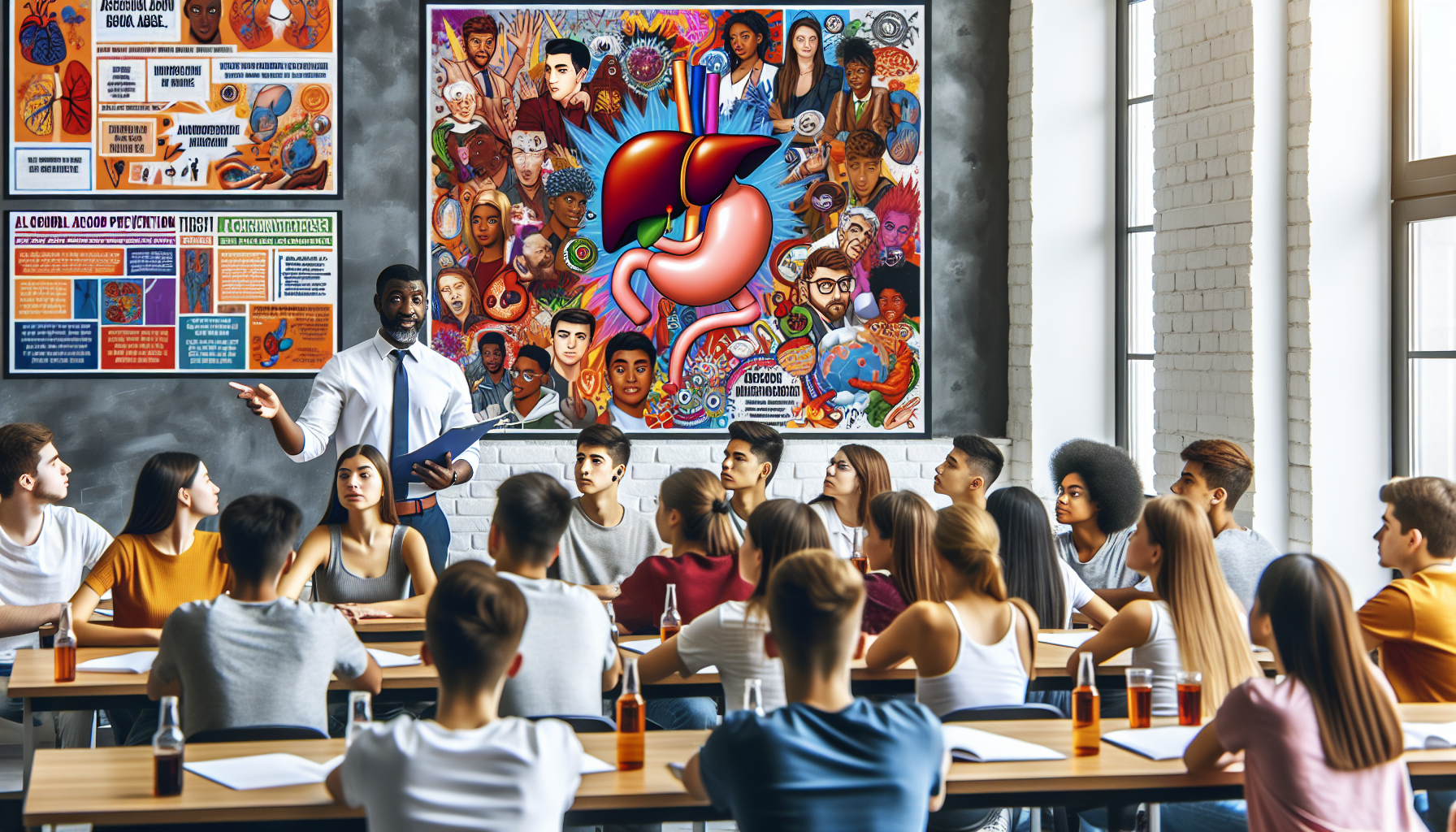
The battle against alcoholism isn’t just fought in treatment centers; it begins with prevention and efforts to reduce alcohol consumption at the individual and community levels. Education plays a key role, as it can delay the onset of alcohol use, particularly during adolescence, and can serve as a protective factor for those at risk due to genetic predisposition to. Evidence-based mass media campaigns have also shown promise in curbing alcohol misuse among young people.
Public health measures, including policy interventions such as raising the legal drinking age, restricting alcohol advertising, and increasing taxes on alcoholic products, have proven effective in lowering consumption and preventing alcohol-related harms. On a personal level, individuals are urged to adhere to the Dietary Guidelines for Americans, which provide benchmarks for moderate drinking. These strategies are essential in creating an environment that supports healthy choices and mitigates the risks associated with alcohol misuse and drinking alcohol.
Community and Policy Approaches
Community and policy initiatives are powerful tools in the prevention landscape. Some examples include:
- Increasing alcohol taxes, which can reduce overall consumption (studies show a 7% decrease for every 10% price increase)
- Controlling the density of alcohol outlets, which can lead to a reduction in excessive drinking and related problems
- Implementing laws that hold establishments accountable for illegal sales, such as Dram Shop liability laws
- Restricting the days and hours of alcohol sales
These initiatives play a significant role in minimizing harm and supporting mental health services administration.
Enforcing existing laws that prohibit the sale of alcohol to minors is another critical strategy for reducing underage drinking and its associated risks. These approaches, when effectively implemented, can create a safer and healthier community by addressing the root causes of alcohol misuse and offering a framework for responsible alcohol use.
Personal Choices and Moderation
On an individual level, self-awareness and moderation are key factors in preventing alcohol abuse. Here are some strategies to help maintain control over alcohol intake:
- Keep a detailed record of drinking behaviors to illuminate patterns and triggers that lead to excessive consumption.
- Learn from individuals who drink moderately to gain insights into achievable drinking habits.
- Set personal limits on alcohol intake to maintain control.
Reflecting on the negative impacts of one’s drinking can be a sobering exercise, paving the way for more mindful alcohol use. Transforming relapses into learning opportunities without harsh self-judgment can foster better habits and reduce the likelihood of future excessive drinking.
Strong social connections and healthier stress management practices, such as exercise or meditation, can also mitigate the need to use alcohol as a coping mechanism to. For some, committing to a period of abstinence, like a 30-day challenge, can be empowering, offering a glimpse into the benefits of a sober lifestyle.
The Role of Society and Culture in Alcohol Use
Societal norms and cultural attitudes towards drinking have a profound influence on alcohol consumption patterns and the stigma associated with AUD. Alcohol misuse is often embedded within certain groups or societies where excessive drinking is normalized and celebrated, known as cultural alcoholism. The pressures to conform to these norms can stem from peers, family, and media influences, creating an environment where alcohol abuse is not only common but sometimes expected.
In some cultures, drinking is an integral part of social identity, with traditions that discourage refusal and associate alcohol consumption with attributes like masculinity. The pervasive marketing and advertising of alcohol only serve to normalize and encourage excessive drinking, especially among the youth. Addressing these cultural influences requires creating new traditions, challenging societal pressures, and critically evaluating marketing practices.
Cultural Influences
Cultural norms surrounding alcohol can shape individuals’ behaviors and attitudes towards drinking. In environments where excessive drinking is the norm, individuals may feel compelled to partake, potentially leading to alcoholism. Social pressures and media portrayals contribute to an environment where alcohol misuse is not only accepted but often glorified. These cultural factors can deeply entwine alcohol with certain social identities, making it challenging for individuals to resist the urge to drink.
The fight against cultural alcoholism involves:
- Reevaluating and reshaping the traditions and values that perpetuate harmful drinking behaviors
- Calling for a collective effort to redefine what is socially acceptable
- Providing alternative ways of celebrating and socializing that do not revolve around alcohol.
Combating Stigma
Stigma surrounding AUD can be a significant barrier to seeking help and support. Clinicians may inadvertently contribute to this stigma by using labeling language or displaying less empathy towards patients with AUD. Misconceptions about alcoholism, such as viewing it as a choice or a character flaw, further exacerbate the stigma in clinical environments. Reducing stigma involves promoting patient autonomy, employing non-stigmatizing language, and providing evidence-based treatments in accessible settings.
Shame is one of the most profound emotional experiences for individuals with AUD, and it plays a significant role in the stigma they face. Overcoming stigma is not just the responsibility of healthcare providers; it requires a societal shift towards empathy, understanding, and acceptance of those struggling with alcoholism.
Summary
As we reach the end of this exploration into the depths of alcoholism, it’s clear that this condition is a multifaceted issue that affects individuals, families, and societies at large. From the initial signs and symptoms to the complex interplay of genetics, environment, and mental health, alcoholism demands a comprehensive understanding and a compassionate response. The health consequences are severe and far-reaching, but with a variety of treatment options and strategies for prevention, there is hope for those seeking to break free from the cycle of addiction.
This guide has traversed the landscape of alcoholism, shedding light on the nuances of its impact and the breadth of recovery options. With every step toward education, treatment, and societal change, we move closer to a future where alcoholism is both understood and overcome. May this serve as a catalyst for dialogue, action, and ultimately, healing.
Frequently Asked Questions
What are the 3 types of alcoholic?
There are three types of alcoholics: chronic severe alcoholic, functional alcoholic, and young adult alcoholic. These subtypes account for different percentages of American alcoholics, with the largest being young adult alcoholic.
What are the 4 types of wives of alcoholics?
The four types of wives of alcoholics are Suffering Susan, controlling Catherine, wavering Winifred, and punitive Polly, as described by Whalen in 1983. Each type reflects a different aspect of the relationship between the wife and the husband’s alcoholism.
What are the 4 types of drinker?
The four types of drinker can be categorized as Hemingways, Mary Poppins, Nutty Professors, and Mr. based on their behaviors when consuming alcohol. In general, people drink to increase positive emotions or decrease negative ones, falling into the categories of enhancement, coping, social, and conformity.
What exactly is alcohol use disorder (AUD)?
Alcohol use disorder (AUD) is a medical condition where individuals have difficulty controlling their alcohol intake despite negative consequences in various aspects of their lives. It is diagnosed using criteria that evaluate the severity of the disorder.
How does alcohol affect the brain and lead to addiction?
Alcohol disrupts the balance of neurotransmitters in the brain, leading to changes in mood, behavior, and brain structure. Chronic use can cause the brain to adapt, developing tolerance and withdrawal symptoms, which contribute to addiction.




